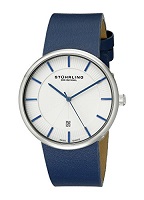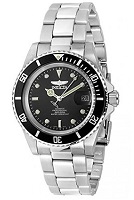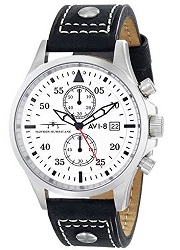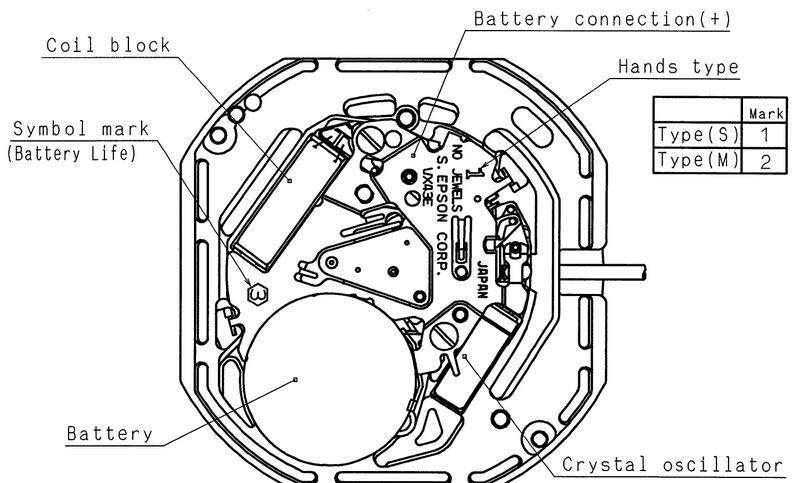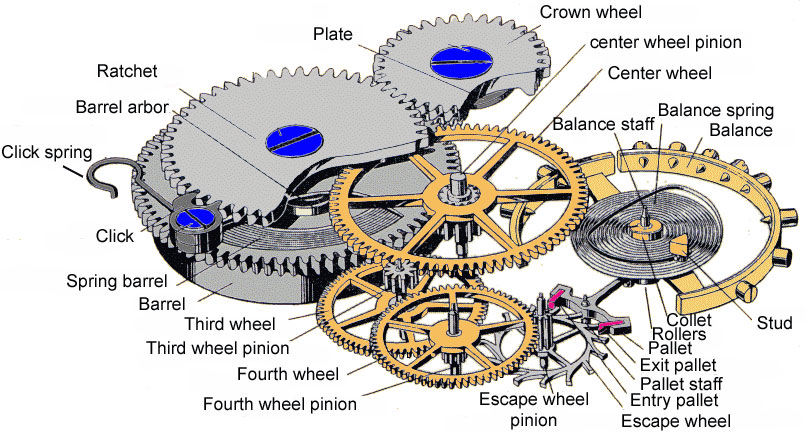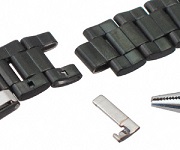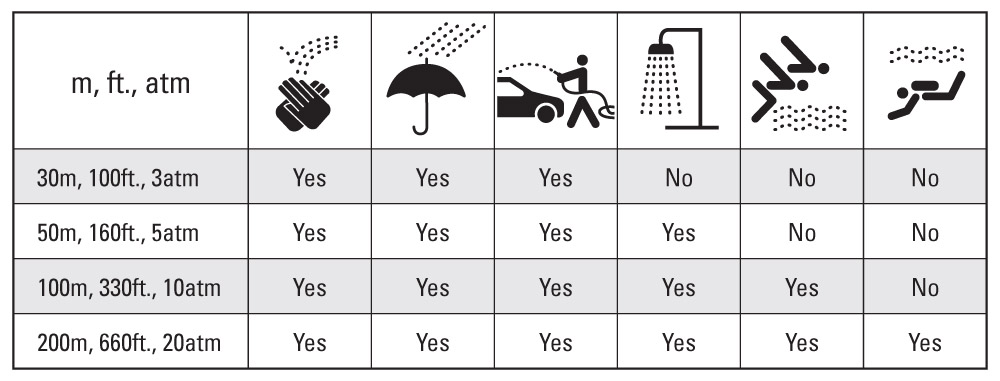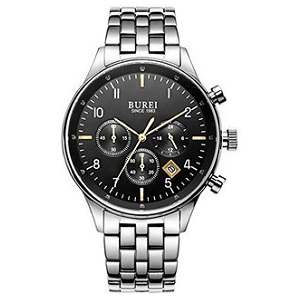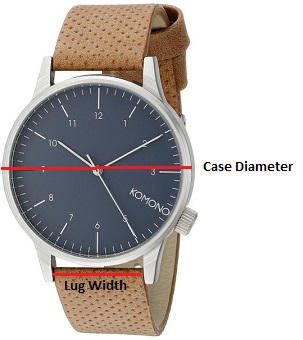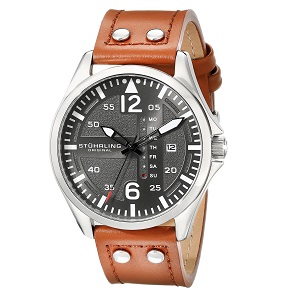Watches on a Budget
Watches on a Budget
The watch that you are wearing can say a lot about you. Especially in this day and age when a watch is not the primary source of timekeeping for most people. Since your watch is a style statement, we want you to be informed about the time piece that you are wearing. We have done the work to curate some of the greatest watches on a budget. Read below to see what is important to look for in your watch – since it is a staple item that you will likely be wearing everyday, you might as well learn a thing or two about it. If you already have solid horological knowledge, click through to see what we consider the best watches for under $100 and under $200.
Style of Watch
Differentiating between types of watches is fairly subjective. I determine the style of watch based on the type of Face and Strap they have, and where it will be worn. Most watch lovers will have at least one watch of each type in their collection for different occasions. If you rotate wearing them, the watches should last longer since you won’t be wearing the same one all the time. The 3 main styles of watches are broken down below.
Dress Watch
- Usually has a black or brown leather band, or a metal bracelet
- Ideal for pairing with a suit or formal business office wear
- Usually in a higher price range – but not necessarily
- The Jorg Gray JG6500 (US – | –) is pictured to the right, worn by President Obama at formal occasions such as the Inaugural Ball
Fashion Watch
- Can be a more unorthodox style – including large and bold or modern, minimal and sleek
- Can have intensely colored bands and faces
- Different materials such as silicon or rubber bands
- There is no limit to the possibilities of a ‘fashion’ watch, they come in all shapes and sizes
- The Stuhrling Ascot Fairmount (US – | -) has a vibrant blue leather strap and matching blue accents on the face
Diver Watch
- Usually water resistant to at least 100 metres
- Band is normally stainless steel with thicker links for a masculine look. Smaller, shiny detailed links can give a watch more of a feminine look, like jewelry
- Can be more versatile since there aren’t leather bands to match with your shoes or belt
- The Invicta Pro Diver (US – | -) with automatic movement (pictured right) is an homage to the famous Rolex Submariner diver, and is water resistant to 200 metres
Military / Pilot Watch
- Aviation played a large role in the development of watch technology. One of the first pilots, Albertos Santos-Dumont had a wristwatch designed and manufactured specifically for him and his expeditions
- The German Pilot design was the staple for aviation in a similar way to how the Rolex Submariner was the benchmark for diver watches. Because of this, this look (known as the B-Uhr, originally made by German companies) can be found in many modern watches made by several different manufacturers. The Avi-8 Hawker (US – | –) shown right is a great example of this
- Military Watches are often seen with a Nato strap (which originates from the British Ministry of Defense). These have sprung up in popularity, largely due to their adaptable nature and low cost
Watch Movements
A watch’s movement is what makes it tick. These may be electronic, mechanical or a combination of both. If it is both, the watch will likely be battery powered with a mechanical movement in the hands. If you look at the movement of the watch, a quartz ticks at each second interval and a mechanical moves in more of a sweeping motion. Although a quartz is cheaper and more accurate, it is less desirable to watch connoisseurs since many are mass produced with low quality parts. With that said, the Quartz watches that you see on this website are made by reputable brands with long-lasting components. After all, what good is a watch if it doesn’t tick!
Quartz Movement
Most watches that you see on this website will have a quartz movement. This means that they have a battery operated stepping motor that makes the second hand tick in 1 second intervals. The quartz part of the watch is a crystal that oscillates to drive the motor at a consistent speed. Quartz watches are usually less expensive. The only maintenance is usually the battery that will likely need to be replaced every 2 -4 years. However, there are also now solar powered and kinetic quartz watches which can prevent the need for battery replacement. You will notice that Quartz are often categorized into Japanese or Swiss movement. This relates to where the components for the movement were manufactured (e.g. movements made in Japan can be labelled ‘Japanese Movement’). If the movement and watch case is manufactured in Switzerland, the product can be labeled as ‘Swiss Made’ and not just ‘Swiss Movement’. For the average watch buyer, the benefits of a quartz is that they are affordable, efficient and accurate.
Mechanical Movement
A mechanical watch does not have a battery and is classified as either Manual or Automatic.
Mechanical Movement – Manual
Manual watch movements are propelled by a spring that is wound up by the user. This gives the gears about 40 hours of energy to keep ticking. Mechanical watches are mostly European made and are known for their quality – often lasting for generations. If you are looking for an inexpensive watch this may not be your best option since they will require regular service in order to keep accurate time.
Mechanical Movement – Automatic
Unlike Manual watches, Automatic watches are self-winding. Automatic watches are a type of mechanical watch that are powered by the movement of the wearer’s hand. You can identify these by the sweeping motion that the hands move in. These watches are often designed in a way that display the rotor movement which spins when the watch is in motion. Similar to Mechanical watches, this is an old technology which will require maintenance ever so often.
Dial Window Material
This feature is important to consider. Similar to your cell phone, one of the most common forms of damage is cracked or scratched glass on the watch face. You will inevitably drop your watch at some point or bang it off of a hard object. You can prevent this damage by choosing the right type of material:
Acrylic Crystal – This is an inexpensive plexiglass material that is not considered scratch resistant
Mineral Crystal – This glass is considered scratch resistant but it can be damaged by hard materials like metal. It also shatters easier than Acrylic or Sapphire crystal.
Sapphire Crystal – This is a synthetic material that is the most resistant to scratching and shattering. It is also the most expensive of these three materials.
Band Material
Consider the purpose of the watch when choosing the band. In addition to style, some materials are heavier in weight and have different durability levels which need to be taken into consideration.
Watch bands are usually either in the style of a Bracelet or Strap. Bracelets are linked together, often seen in stainless steel watches which match the case of the watch. Links can be taken out of the strap in order to re-size the band. Straps are usually in two pieces with a buckle to connect them. Straps are typically less expensive (depending on the material) and are often easier to take off and replace with other bands (interchangeable). If you know the width of the lugs or band, you can replace the strap with one that is the same size (or smaller).
The most common materials for watch bands are Leather (Genuine), Metal (Stainless Steel), Plastic, Rubber, Wood, Fabric and Ceramic.
Watch Resistance
Many watches that are labelled ‘water resistant’ are considered safe around splashes of water – they are not meant to be submerged unless a maximum depth (ATM) rating is given for the watch. These depths usually range from 50 – 1,000 metres (6 – 101 ‘Atmospheres’). Diving watches usually start at about 21 ATM. If you submerge a watch in the water without the proper rating the face will likely explode or leak from the pressure. Note that diving watches are also built with other special features such as gaskets that seal all parts of the case from water leakages.
Many diving watches also have a bezel which borders the outside of the watch face and keeps it together. A bezel is used for measurement, for example timing how long you have been underwater. A bezel can be stationary, or have functions such as bidirectional/unidirectional, interchangeable, slide-rule or tachymeter (for measuring speed). Diving watches should also have a stainless steel case.
Watch Face
You may notice that some watches have a lot more going on than a ticking first and second hand under the dial window. These extra features are known as ‘complications’ and can include details such as the date, chronograph (with subdials), backlights, alarms, and so on. Here is a break down of some of the most common complications:
Date Display – This can include a ‘date window’ which is simply a number for the day, or a ‘day date’ which includes the day of the week (e.g. Friday).
Calendar – This is a subdial which tells the full date including the year. This can be an annual calendar (which does not automatically adjust for leap years), or a perpetual calendar which takes into account leap years and means that you don’t need to manually set the date on March 1st.
Chronograph – This is essentially allows your watch to function as a stopwatch. Most chronos only have one button only allows the timer to start, stop and reset. Two and three button chronos allow for measuring interrupted time spans.
Travel Features – A dual time complication displays two different time zones. This can be useful for world travelers and is a fun feature for the geographically inclined individual.
Watch Dimensions
The size of your watch is really dependent on a few things – your wrist size, and your personal style. Men’s watches have been trending towards a larger bulkier size for the last 10 years or so, however it seems that the trend is ending in favor of a more sleek and low profile size. The dimensions below are especially important to be aware of when buying a watch online since it is difficult to imagine how large it will look on your wrist.
Case Diameter – The modern average watch is about 37mm – 39mm, while a sport watch is usually between 40mm – 42mm. Some oversized models can be at least 45mm in diameter. If you are in the market for a vintage watch it will likely be a smaller size, between 34mm – 38mm.
Case Height – This is the thickness of the watch. It has a direct correlation to the weight of the watch – lightweight models have more of a low profile stature. When it comes to an automatic watch, the thinner it is means the more refined the complication is. Dress watches are usually thinner so that they can fit under suit sleeves, while a diver watch for example may have a thicker case.
Case Shape – Although the most common watch shape is round/oval, you will also see some rectangular and square models out there. Normally rectangular cases are a European design. If looking for a watch on a budget, we recommend choosing a round face since they are easier and less expensive to fix. Rectangular watches are usually less water resistant, and the glass is more costly if it needs replacing. An exception to this is smart watches, since most are rectangular due to the electronic components inside the case.
Band Width – The lugs which hold the case to the strap determine how wide the watch is and the type of band that it can hold. We recommend choosing a watch that has a common band size (e.g. 18mm – 24mm) so that the straps can be swapped out easily. This will save you money since you can buy an inexpensive band to change the style of your watch, instead of paying for a whole new watch.
Weight – All of the features above directly contribute to how heavy your watch will be. The average watch weighs between 1.6 ounces (45 grams) and 4.4 ounces (125 grams). A stainless steel watch with a rubber strap will normally be lighter than a more expensive watch with all steel parts (including the band).
Well there you have it, you should now know all of the features to look for when choosing a watch on a budget. The different style, movement, materials and water resistance make a difference when it comes to finding the best inexpensive watch. Now that you are ready to browse, we have compiled the nicest watches under $100 and under $200 to make the choice easier for you.


